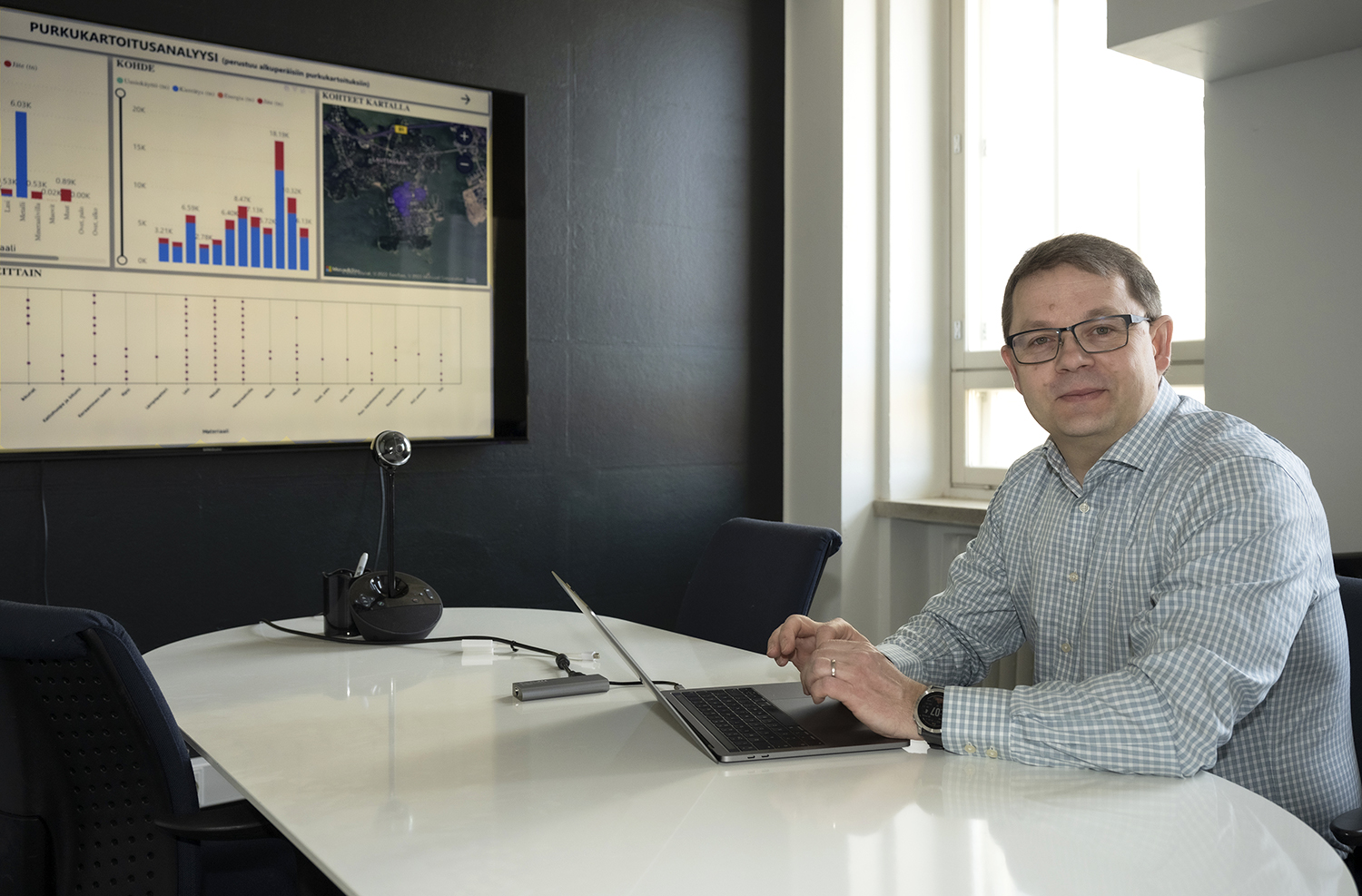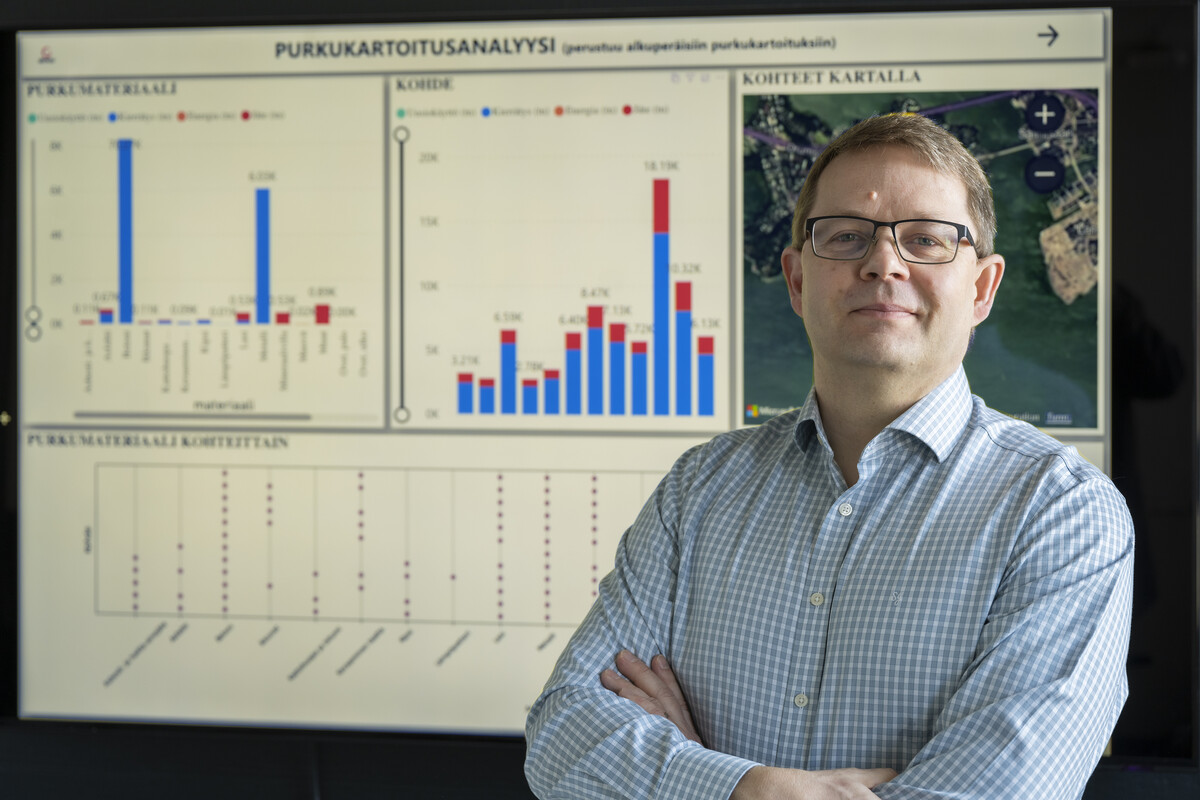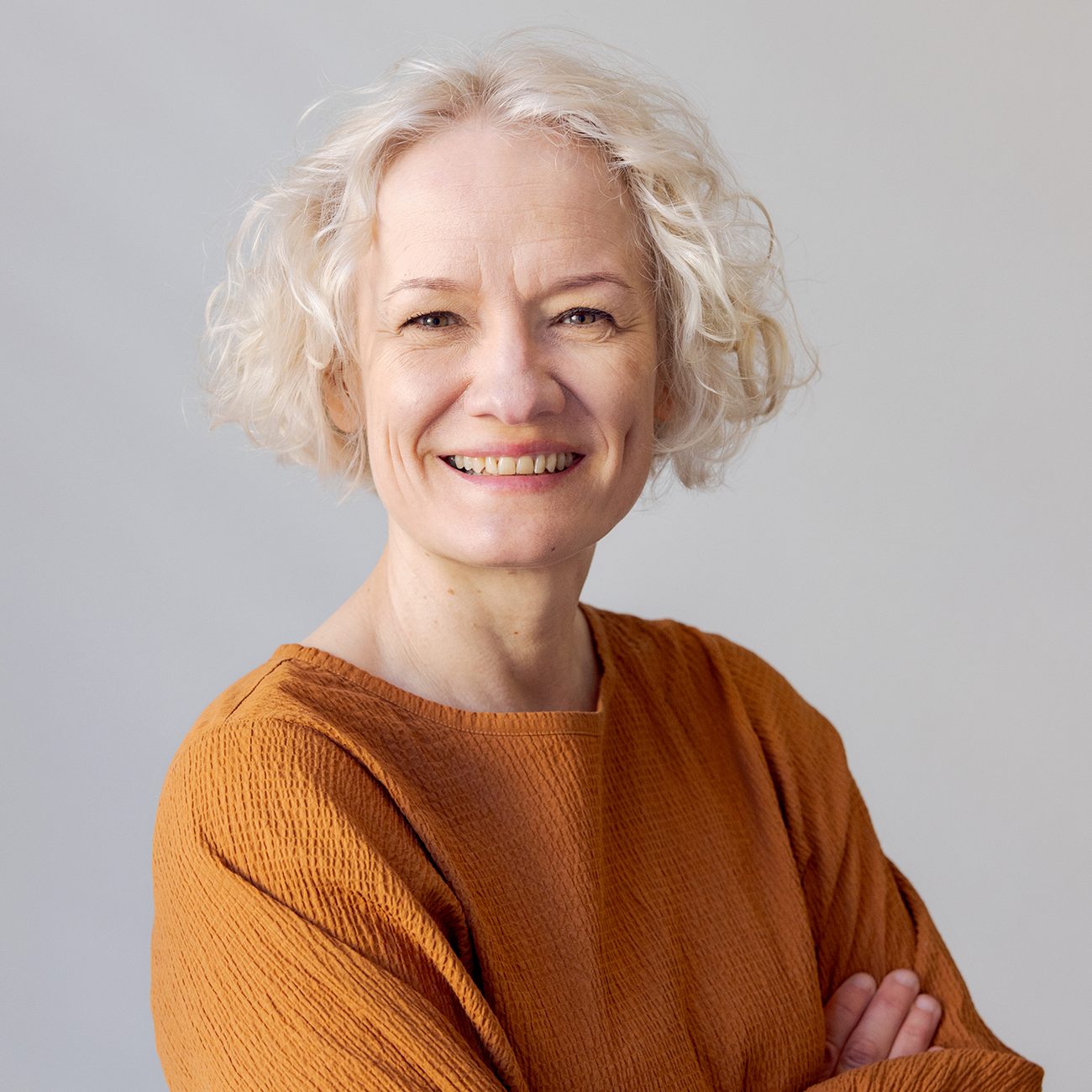Digital leap in circular construction – shared data supports ambitious goals
To utilise materials from demolished buildings efficiently, it is required that information about the materials’ quality and quantity is available well in advance. In Vattuniemi, Lauttasaari, a shared digital platform makes operations much easier as it brings the data on the material flows into one place.

In the Vattuniemi neighbourhood in the Lauttasaari district, a globally unique project is underway. The 16 buildings in the area, mostly offices, will be demolished, and the aim is to reuse the demolished materials as efficiently as possible. To succeed, up-to-date information is required on which materials and at which quality level are being generated, and when the materials become available for reuse.
In the Vattuniemi circular economy project, the data and the digital platform developed for it have played a key role from the start. The aim is to build a community out of the organisations that use the platform data. In this community, members work towards shared goals and follow rules that promote circular economy. Data to be used jointly includes e.g. who is about to demolish their building, which materials will be generated in each site, and what the schedule will be like.
CTO Sami Jokela from 1001 Lakes, a company that promotes data economy, says that, currently, at best, companies and other organisations only use their data for internal purposes. More extensive use of data is still in its infancy.
Matching demand and supply
Jokela says that the Vattuniemi platform and the community around it have ambitious goals in reusing demolition materials. When information about demolished materials is available well in advance, the operators to utilise the materials can include it in their own plans for circular economy.
Jokela compares the operations to baking. For the demolished materials, recipes for various forms of recycling are prepared. One construction operator may need sugar and flour, while another may need a ready-made cake. Of course, you also need a baker. In other words, the Vattuniemi community will also need concrete crushers and logistics specialists to refine or transport the materials at the times agreed on.

According to Sami Jokela, Vattuniemi is a unique site since an exceptional amount of building mass will be demolished almost simultaneously. This makes planning and reuse also financially appealing.
Extensive data collected on a platform
Getting the demolition data on a single platform is more significant than what it may initially seem to be. The utilisation of materials will be made easier when the data from each building to be demolished can be combined, refined and passed forward.
On the shared platform, various data systems and marketplaces can also be added, in addition to material providers, material users and other operators. One such marketplace is Materiaalitori.fi. The intention is also to produce statistical information about materials’ prices and climate impact, among other aspects.
So far, demolition surveys have been carried out on the Vattuniemi properties, their data has been added to the digital platform, and the data on the demolition surveys has been analysed. Aki Finér, expert at Motiva, says that the platform will include data and functionalities that will help the operators with questions regarding circular economy in demolition projects.
”They can learn about successful pilot projects regarding the utilisation of various building components and selling movables forward, for example,” Finér says.
He emphasises the necessity of sharing information and engaging in dialogue between operators. The views of the industry operators will be needed to make the most of all opportunities. Experiences from Vattuniemi can also be shared across Finland through the existing networks
“We are testing the operations in the Helsinki region, but the aim is to involve other regions and demolition projects in the future. Once the operations and the community expand, we can better study what more can be achieved through producing, managing and analysing data.”
Mitigating climate change and biodiversity loss
Jokela and Finér emphasise that we must learn to limit the use of virgin materials to conserve natural resources alone. To mitigate both climate change and loss of biodiversity, functional circular economy, and solutions and operating models that support it, will be needed.
The industry is constantly developing, and authorities’ involvement is also required. In Vattuniemi, following and actively participating in the industry’s development are key.
“The first steps have now been taken in Vattuniemi,” Jokela states. ”Once the planning of the demolition work progresses and schedules are specified, we can promote the utilisation of demolished materials even more efficiently.”
Photos: Ilkka Ranta-aho

